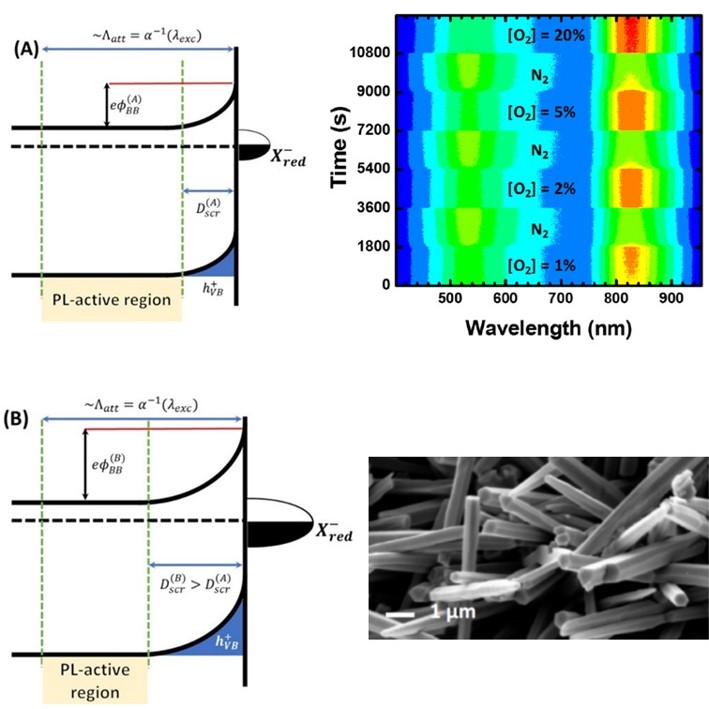Description of the activity
Chemo-resistive gas sensors represent the class of devices mostly used in the field of chemical sensors, due to their high sensitivity and low power consumption. These devices are based on the use of layers of metal oxide semiconductors, whose electrical conductivity is modulated / modified by the presence of gas at given concentrations.
One of the major technological limitations in chemo-resistive sensors is the poor selectivity of the sensor. This problem can be generally faced with multiple response systems, using different sensitive elements or increasing the number of sensitive parameters to be interrogated.
As some metal oxides have good fluorescence efficiencies (e.g. zinc oxide, titanium oxide, cerium oxide), it is possible and interesting – not only from an applicative but also a scientific point of view – to investigate whether and how their fluorescence can be used as an additional parameter that reacts to changes in the concentration of gaseous analytes.
In this activity, the influence of various gaseous analytes (e.g. O2, CO, NO2) on the fluorescence properties of some metal oxides having important roles in gas sensors (e.g. SnO2, ZnO, TiO2, …) is analyzed, also at aim to provide modeling of the recombination phenomena in su

Involved personnel
National and International Collaborations
- Istituto di Scienze e Tecnologie per l’Energia e la Mobilità Sostenibili (STEMS), CNR
- University of Napoli Federico II
Instrumentation/facilities
- System for gas mixing and optical measurements in controlled environment.
- System for conductivity measurements in a controlled environment.
- Kelvin probe for measuring surface potentials.
